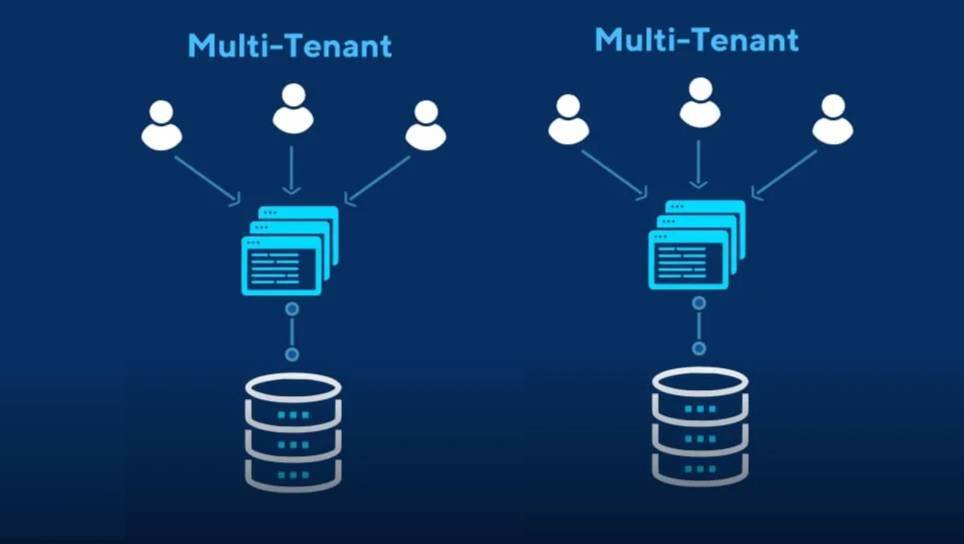Kubernetes, the open-source container orchestration platform, has become the backbone of modern cloud-native applications. Its ability to manage containers at scale makes it a popular choice for organizations, leading to the need for multi-tenancy solutions that allow multiple users or groups (tenants) to share the same cluster efficiently and securely. This guide article discusses the key strategies and best practices to implement robust Kubernetes multi-tenancy, ensuring optimal resource utilization, security, and isolation.
Cluster Isolation
Namespaces serve as the fundamental tool for cluster isolation. By creating distinct namespaces for each tenant, you establish logical boundaries within the cluster. Network Policies complement this by controlling pod communication between namespaces, reinforcing network isolation and security.
Resource Management
Resource quotas are vital in multi-tenant environments. Administrators define quotas for CPU, memory, and storage at the namespace level to prevent any single tenant from monopolizing cluster resources.
Limit Ranges provide default resource limits for pods, ensuring fair distribution. Horizontal Pod Autoscaling dynamically adjusts the number of pods in response to resource demand, thus optimizing utilization.
Security Measures
Role-Based Access Control (RBAC) plays a crucial role. By defining fine-grained permissions, you control who can access and modify resources within namespaces. Pod Security Policies and context settings further bolster security, specifying the execution context for pods and containers and limiting potential vulnerabilities.
Storage Isolation
Storage Classes and Persistent Volume Claims (PVCs) enable tailored storage solutions for each tenant. Storage Classes define different storage configurations, while PVCs abstract underlying storage details, simplifying tenant interactions. This ensures data separation and maintains storage efficiency.
Monitoring and Logging
Comprehensive monitoring and logging are essential. Cluster-wide monitoring tracks resource utilization and performance, enabling proactive issue resolution. Centralized logging aggregates logs from all tenant workloads, aiding in troubleshooting and security analysis.
Tenant Onboarding and Offboarding
Automation is key to seamless tenant management. Automated processes for onboarding and offboarding tenants ensure consistency and compliance. Custom Admission Controllers enforce policies during pod admission, guaranteeing strict adherence to multi-tenancy.
Custom Resource Definitions (CRDs)
CRDs enable the creation of custom resources, allowing tenants to define and manage complex applications within their namespaces. This flexibility caters to diverse tenant requirements, promoting innovation and customization.
Backup and Disaster Recovery
Regular backups of cluster data, configurations, and tenant workloads are indispensable. A well-defined disaster recovery plan outlines the steps to restore services and tenant data, ensuring business continuity in case of catastrophic failures.
Documentation and Training
Comprehensive documentation and training empower tenants. Detailed guides explaining multi-tenancy policies, resource limits, and best practices enable tenants to leverage Kubernetes effectively. Training sessions educate tenants on Kubernetes multi-tenancy concepts and tools, promoting self-sufficiency and efficient platform use.
Periodic Review and Optimization
Regular audits assess resource usage, security policies, and tenant compliance. Optimization fine-tunes resource allocations based on these reviews and usage patterns, ensuring efficient cluster utilization.
Summary
Kubernetes multi-tenancy demands meticulous planning, strict adherence to security protocols, and continuous optimization efforts. By implementing the strategies outlined in this guide, organizations can create a robust, secure, and efficient multi-tenant Kubernetes environment, fostering collaboration and innovation while safeguarding data integrity and system stability.

Ingrid Maldine is a business writer, editor and management consultant with extensive experience writing and consulting for both start-ups and long established companies. She has ten years management and leadership experience gained at BSkyB in London and Viva Travel Guides in Quito, Ecuador, giving her a depth of insight into innovation in international business. With an MBA from the University of Hull and many years of experience running her own business consultancy, Ingrid’s background allows her to connect with a diverse range of clients, including cutting edge technology and web-based start-ups but also multinationals in need of assistance. Ingrid has played a defining role in shaping organizational strategy for a wide range of different organizations, including for-profit, NGOs and charities. Ingrid has also served on the Board of Directors for the South American Explorers Club in Quito, Ecuador.








































